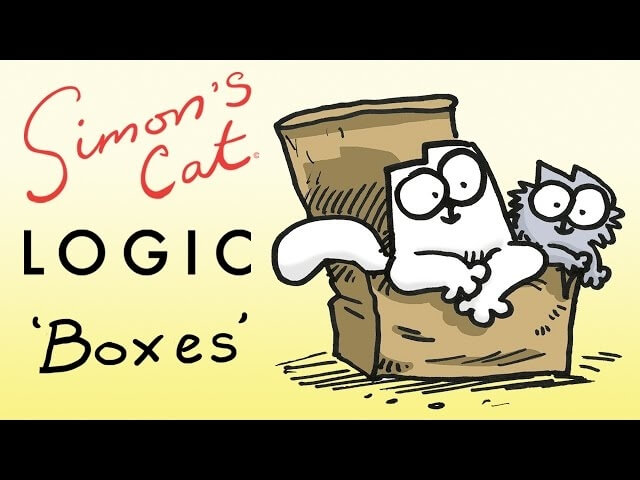A new “Simon’s Cat Logic” video explains why cats love cardboard boxes

When Andrew Lloyd Webber adopted Old Possum’s Book Of Practical Cats by T.S. Eliot into a Broadway musical some 35 years ago, there is one critical aspect of feline behavior he overlooked: an abiding obsession with cardboard boxes. Why don’t the elaborately costumed characters in Cats spend most of their time seeking out empty cardboard boxes, either as shelter or as playthings? It’s inexcusable. Luckily, British illustrator Simon Toland has taken a more realistic approach with his series of animated “Simon’s Cat” cartoons. The latest installment is part of a sub-series on what the artist deems “cat logic.” In these videos, a typical pantomime cartoon from Toland is preceded by a little documentary about feline psychology with expert testimony from cat behavior specialist Nicky Trevorrow. Previous episodes have focused on whether cats fall in love and why cats go crazy sometimes. This one addresses a simple question: “Why do cats love boxes?!” Trevorrow explains that “cats feel safe in enclosed spaces. This explains why cardboard boxes are immensely popular. They feel safe, having something enclosed and particularly something with sides.” So to a cat, an empty cardboard box is a miniature fortress.
This is behavior that Toland has seen with his own cats, particularly one named Teddy. Trevorrow says that “all cats need to be able to hide, not just the scaredy-cats and not just when there’s fireworks outside.” So pet owners should indulge their cats’ interest in cardboard boxes, even if that means that their pets are ignoring the expensive cat towers their owners have purchased and assembled. Boxes can even be incorporated into an an animal’s feeding routine. After the mini-lesson, it’s time for an animated “Simon’s Cat” vignette. In this one, a pet owner drops a nondescript, lidless cardboard box on the floor, where it is discovered by a wide-eyed feline. The animal explores all the possibilities of this strange new object before finally destroying it. It’s like The Giving Tree without the codependent angle.
[via Laughing Squid]